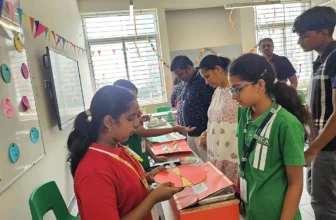
PSLE Math statistics and probability questions are designed to test students’ understanding of data interpretation and the likelihood of events. Mastering these topics requires a solid grasp of concepts, careful problem-solving techniques, and regular practice. Whether you’re seeking to improve your skills or help a student excel, understanding how to approach these questions is crucial. This guide will provide insights into tackling PSLE Math statistics and probability questions effectively, with a focus on how “free live tutoring for math” can enhance learning and comprehension.
1. Grasp the Basic Concepts
Before diving into complex questions, ensure that you understand the fundamental concepts of statistics and probability:
- Statistics Concepts: Key concepts include mean (average), median, mode, range, and interpreting data from tables and graphs.
- Probability Concepts: Fundamental probability concepts involve calculating the likelihood of events, understanding simple events versus compound events, and using probability formulas.
Tip: Utilizing “free live tutoring for math” can help clarify these basic concepts through interactive explanations and practice problems tailored to your needs.
2. Interpret Data Accurately
Accurate data interpretation is essential for solving statistics questions:
- Read Graphs and Charts: Learn how to extract and interpret information from various types of graphs and charts, such as bar graphs, line graphs, and pie charts.
- Understand Tables: Be able to read and analyze data presented in tabular form, including frequency tables and data sets.
Tip: Free live tutoring for math often includes practice with interpreting different data formats, helping students become proficient in extracting relevant information.
3. Calculate Mean, Median, and Mode
Calculating mean, median, and mode are common tasks in statistics questions:
- Mean: Add up all the values and divide by the number of values.
- Median: Arrange the values in ascending order and find the middle value (or the average of the two middle values if there’s an even number of values).
- Mode: Identify the value that appears most frequently in the data set.
Tip: During “free live tutoring for math” sessions, tutors can provide step-by-step guidance and practice problems to reinforce these calculations.
4. Solve Probability Problems
Probability questions often involve calculating the likelihood of various outcomes:
- Simple Probability: Use the formula P(A)=Number of favorable outcomesTotal number of outcomesP(A) = \frac{\text{Number of favorable outcomes}}{\text{Total number of outcomes}}P(A)=Total number of outcomesNumber of favorable outcomes to find the probability of a single event.
- Compound Probability: For multiple events, use addition or multiplication rules depending on whether the events are mutually exclusive or independent.
Tip: Online math tutoring can offer interactive exercises and explanations on probability rules, helping students understand and apply them effectively.
5. Apply Problem-Solving Strategies
Effective problem-solving strategies can simplify complex statistics and probability questions:
- Break Down the Problem: Decompose the problem into smaller, manageable parts and solve each part step-by-step.
- Check Your Work: Review your calculations and ensure that your solutions make sense in the context of the problem.
Tip: Free live tutoring for math can provide personalized problem-solving strategies and support, helping students approach and solve questions systematically.
6. Practice with Past Papers
Practicing with past PSLE papers and sample questions is crucial for exam preparation:
- Familiarize with Question Formats: Understand the types of statistics and probability questions commonly asked in PSLE exams.
- Time Management: Practice solving questions within a set time limit to improve speed and efficiency.
Tip: Tutors offering “free live tutoring for math” may provide access to past papers and timed practice sessions, helping students prepare effectively for their exams.
7. Use Real-Life Examples
Applying statistics and probability concepts to real-life situations can enhance understanding:
- Practical Scenarios: Use real-life examples, such as analyzing sports statistics or predicting weather patterns, to make abstract concepts more tangible.
- Interactive Activities: Engage in activities that involve data collection and analysis to reinforce learning.
Tip: Free live tutoring for math can incorporate real-life examples and interactive activities to make learning more engaging and relevant.
8. Review and Reinforce
Regular review and reinforcement of concepts are essential for mastering statistics and probability:
- Revisit Key Topics: Regularly review the key concepts and problem-solving techniques to reinforce understanding.
- Seek Feedback: Get feedback on practice problems and identify areas for improvement.
Tip: Online math tutors can provide ongoing review sessions and feedback, ensuring that students continually reinforce their understanding and address any gaps in knowledge.
Conclusion
Understanding PSLE Math statistics and probability questions involves mastering basic concepts, accurately interpreting data, and applying problem-solving strategies. Utilizing resources like “free live tutoring for math” can provide valuable support through interactive lessons, personalized guidance, and practical examples.
By focusing on these strategies and leveraging available resources, students can develop a strong grasp of statistics and probability concepts, enhance their problem-solving skills, and achieve greater success in their PSLE Math exams. With consistent practice and the right support, students can approach these challenging questions with confidence and proficiency.







